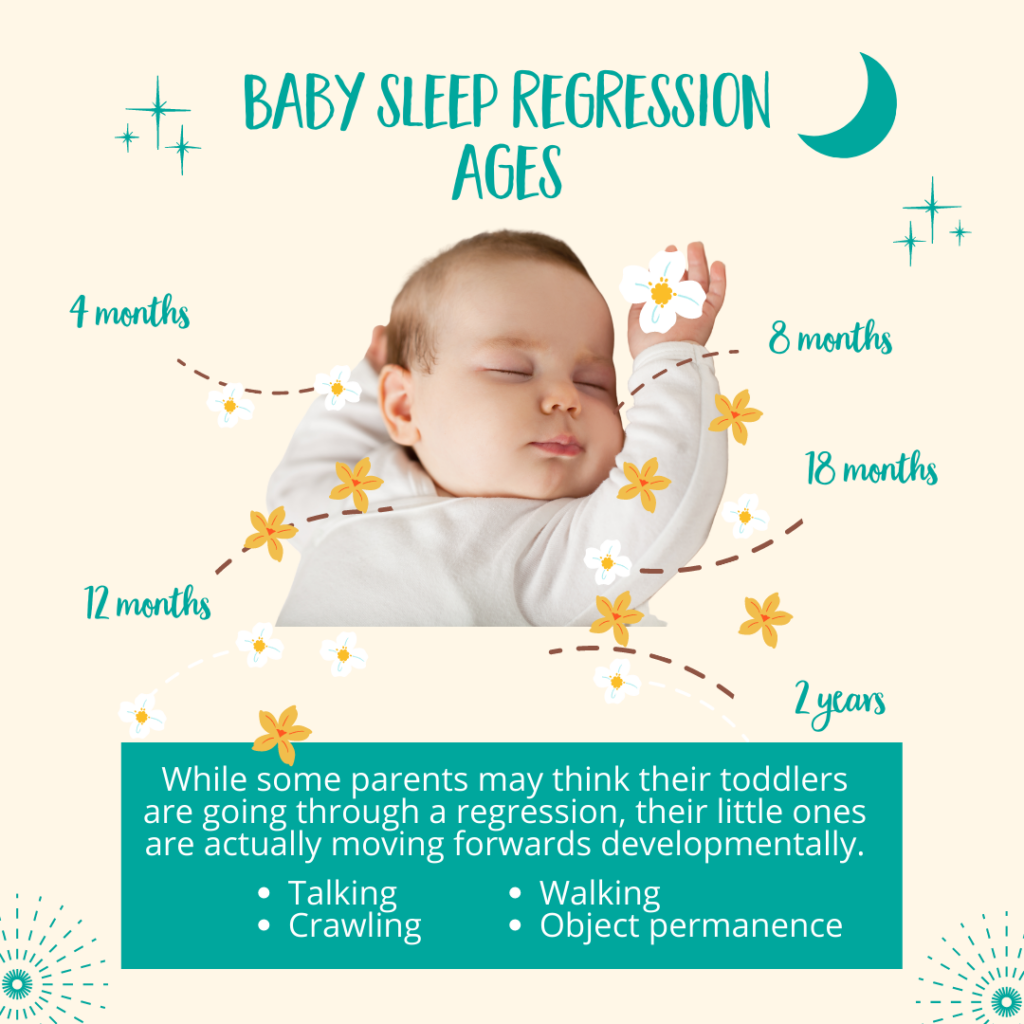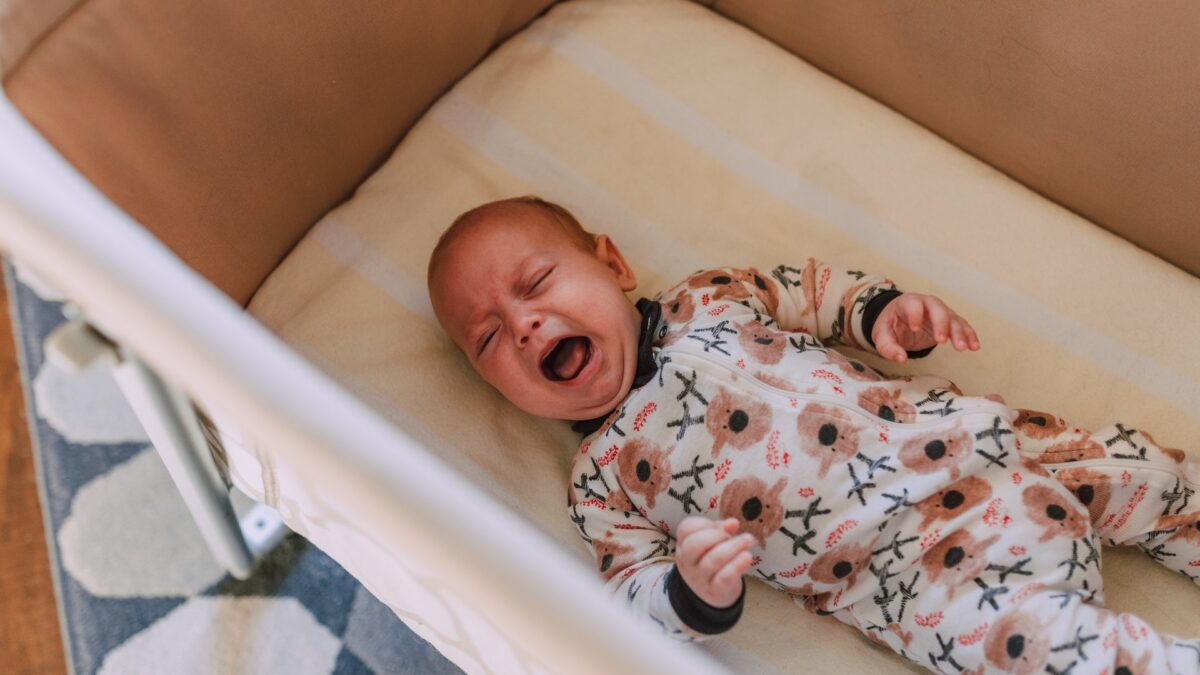What are the sleep regression ages to watch out for, what actually happens and what do you do when they occur? We have some baby sleep experts weigh in.
When my son Elliott was a baby, there were different periods of his young life when all hell would break loose. Putting him to sleep at night was harder and expecting him to sleep for any decent period of time was close to impossible.
These were moments that proved especially challenging, since right from birth, Elliott never followed the baby’s sleep “guidebook”. Growing up, he consistently had one less nap than most other babies his age. When mums in my mothers’ group would talk about their babies having three naps a day, Elliott was having just two. When those babies were on two, Elliott was on one. So I was especially distraught when whatever little sleep we were both getting seemed to erode every few months.
It was during one of my many desperate sessions chatting with the mums from our Facebook group about Elliott’s sleep that I was introduced to the concept of sleep regressions.
What are sleep regressions?
The theory goes that a baby’s sleep patterns change at a particular age. During these periods of “regressions”, you can expect all your bedtime nightmares to come true. Your little one will cry endlessly and seemingly not require any form of sleep at all. You will also laugh maniacally at anyone who suggests “sleeping like a baby” is one of the most peaceful things to experience.
On the surface, it looks like your baby is regressing in whatever sleep habits they’ve learned and developed.
What are the sleep regression ages to watch out for?

It is generally believed that sleep regressions most commonly happen at four months, eight months, 12 months, 18 months and two years. These can differ by a few weeks for each baby and some babies may also skip certain regressions.
If you find it difficult to remember the various sleep regressions ages, just remember this general rule: They pretty much happen just when you think you’re getting used to a routine and are #winning on this motherhood gig.
Perhaps the most scary baby sleep regression age is the four-month sleep regression, which some will declare is the beginning of a permanent change in your baby’s sleep pattern. (Read: Not in a good way if you don’t introduce good sleeping habits then.)
The good news is, in spite of what you may have read, sleep regressions are actually not that terrifying. There are some positive ways to “fix” sleep regressions, the first of which is to be aware that scientific evidence is suggesting the concept of sleep regression is in fact a myth. Read on.
Why do sleep regressions happen?
“Data across the world and time indicate that sleep regressions are a myth,” says Professor Mike Gradisar, a sleep researcher and a sleep psychologist.
“What’s actually going on is that a baby is having a developmental progression and when they’re going through these developmental changes, their sleep may be disrupted,” adds Elaine Harvey, a certified paediatric sleep consultant, early childhood educator and founder of Lullababy SOS.
In other words, while some parents may think their toddlers are going through a regression (that is, going backwards in their sleep patterns), their little ones are actually moving forwards developmentally.
Take the moment to track the pattern (which let’s be honest, most sleep-deprived parents will fail to do) and you will realise a baby’s “sleep regression” is actually linked to them learning new skills and hitting specific developmental milestones.
A baby discovering how to talk, crawl or walk, and even developing object permanence (which also leads to the rise in separation anxiety) all happen at the common sleep regression ages mentioned earlier.
“When babies are going through these progressions, their brains are processing and consolidating information that they are learning throughout the day and typically they process these through the active phase of sleep, the REM sleep cycle,” says Elaine. “So when they are going through developmental leaps/wonder weeks, they typically spend more time in this phase of sleep. Parents will feel that their baby’s sleep is suffering during these periods because they wake more frequently, take longer to settle and are more active throughout the sleep cycles.
“The sleep regressions happen when a baby has an external association with going to sleep and frequently needs the same association to go back to sleep throughout the night. Even a baby who can self-settle will spend longer periods in their active sleep phase. Since babies don’t go through the same type of paralysis we do during sleep, they can wake, startle, chat, grizzle, be generally restless and practise whatever new skills that they are learning during these developmental leaps.”
How do you fix sleep regressions?

When your baby is going through a “sleep regression”, the most important thing to remember is that they are only temporary (that is, this too shall pass). The next thing to do is to create (if you haven’t already) and stick to a positive bedtime routine.
“When you have taught your baby to be comfortable with their bedtime routine and their sleep environment, and if they have some positive sleep associations around settling, they may need assistance a little more than usual [during sleep regressions, but they tend to] cope better and pass through [the stage more] quickly,” says Elaine.
Aloni Benau, co-founder and CEO of Glow Dreaming, also suggests:
- Increase feedings, especially two hours before bedtime. As children grow and go through developmental leaps and growth spurts, they burn more energy and need more food.
- Exercise your child’s new developmental skills while they’re awake with plenty of playtime.
Melissa Hays, a holistic sleep coach and paediatric nurse and midwife from Cocoon and Cradle, recommends:
- Consider if it’s time to drop a nap
- Trial a longer awake time
- Consider a later bedtime
- Practice self care and seek support
How do I know my baby is having a sleep regression (versus just normal baby settling problems)
According to Melissa, common signs of sleep regressions include baby:
- having short naps or refusing nap time altogether
- resisting bedtime
- waking more often at night
- learning a cool new skill
- experiencing separation anxiety or generally fussier
As Melissa points out, another way to know if your baby is having a sleep regression is to determine if whatever is happening occurs during one of the sleep regression ages. (Bearing in mind every child is different so the ages may differ by a few weeks.)
What age do sleep regressions end?
Most experts agree that by the time your child turns two, sleep regressions or developmental leaps will soon be a thing of the past.
As this extensive article on baby sleep states, “While babies develop their own sleep preferences and habits as they get older, there’s also no evidence that any specific sleep change is ‘permanent’.”
So rest assured that whatever sleep problems that may surface during these sleep regression ages, they are only temporary.

How helpful was this article?
Click on a star to rate it!
4.5 / 5. 4
Be the first to rate this post!
Melody Tan
Related posts
Subscribe
Receive personalised articles from experts and wellness inspiration weekly!


